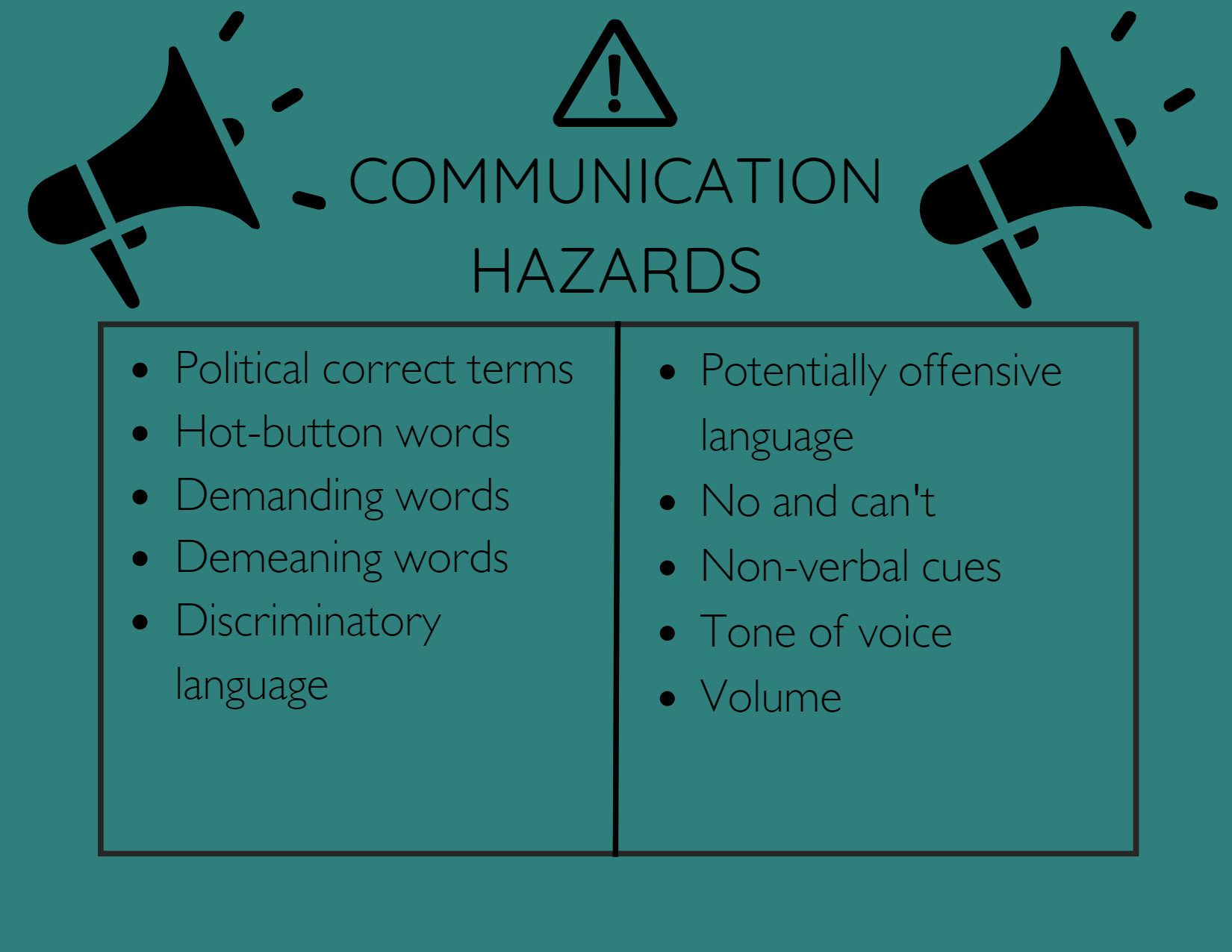
Words and the tone of what is said or written have the power to produce strong emotional reactions, whether writers have crafted the effects of their message with deliberate intent to arouse such emotions or are simply unaware of how provokingly they are coming across. It is the responsibility of the communicator, not of the recipient of the communication, to create the message in a way which is appropriate both to the receiver and to the occasion. For example, the proficiency of the recipient in the language must govern the way the language is used; and if the occasion is a personal message or for a public notice board, the tone of the communication will be different.
“Politically Correct Communication”: Certain words may be offensive to people and should be avoided in order not to create communication barriers. This is especially important if the employee works with customers. It may be offensive to speak of a person as “the old man” instead of the “elderly gentleman” or “the senior person”. Words like “blind” may be substituted with “visually impaired”. In a business familiarity can also offend e.g., addressing a person by his/her name instead of Mr. or Ms Somebody.
Hot-button words: These words push people’s buttons because they trigger negative reactions. These words make people defensive and undermine cooperation. Hot button words are words like:
Demanding words: Words like “you have to”, you must”, “I insist”, and “You’d better” are demanding words. They are perceived as “I have no choice or say in the matter”. These feelings create resentment in the task at hand.
Demeaning words: Words or phrases like “nerd”, “failed”, “That’s a stupid idea”, and “That will never work”, are verbal put-downs. Even if said in jest these words can demotivate people.
Discriminatory language: Words that communicate partiality are discriminatory. For example: “I only want to appoint a woman in her thirties with an MBA and who graduated from the University of Witwatersrand”. This may be perceived as discriminating towards gender, age, and certain academic institutions.
Potentially offensive language: #%#! words. If the manager curses it gives the employees an excuse to use swear words as well. If perceived by other people, people from other departments, executives, or customers, it portrays a bad image of the company.
No, and can’t: Words like “no” and “can’t” stir up negative feelings. It can be perceived as “I don’t even want to listen to you because it is such a bad idea” or “Something is not possible”. People want to hear what is possible and they want their ideas listened to.
Other Communication Barriers
Some barriers come from the way we communicate.
|
Barrier |
Explanation |
|
Nonverbal cues |
Body language, posture, actions, and gestures can send mixed messages or convey a different message than you intend. For example, a furrowed brow can be a sign of concern, anger, or frustration. |
|
The tone of voice, pacing and volume |
Your tone of voice, pacing, and volume can interfere with the communication process for example, monotones and shrill tones can cause the receiver to ”tune out” what is being said. A fast pace can confuse the receiver and a slow pace can cause boredom. |
There are also barriers that come from inside the sender or the receiver.
|
Internal Barriers |
Explanation |
|
Preconceived notions/stereotyping |
Expectations we have of others because of their job roles, gender, ethnic background, etc. These expectations are similar to stereotyping. Stereotyping is implicit in statements such as “All teenagers are…” |
|
Self-concept |
If you think you are good at communicating, it may be hard for you to hear messages to the contrary. On the other hand, if you are insecure you may be overly sensitive to criticism. |
|
Emotion |
When you are angry, you distort communication to get more ammunition for your point of view |
|
Individual differences |
Certain personality styles determine how we act in a situation. Since no two people are exactly alike their differences can lead to miscommunication. |